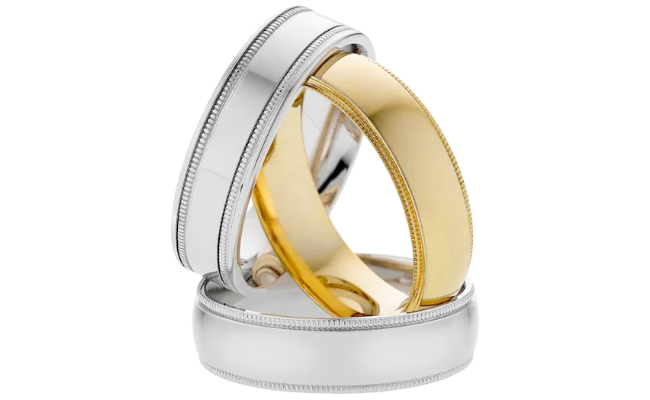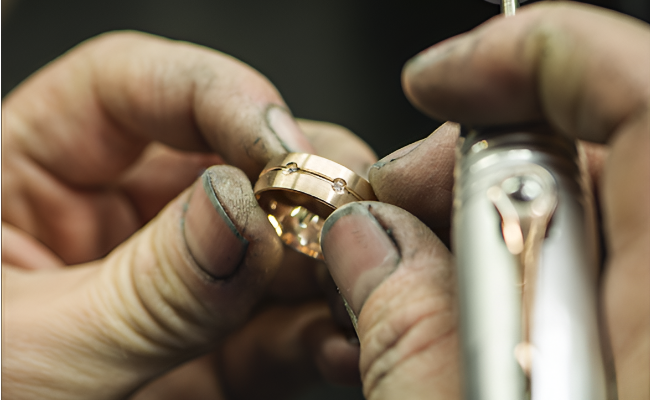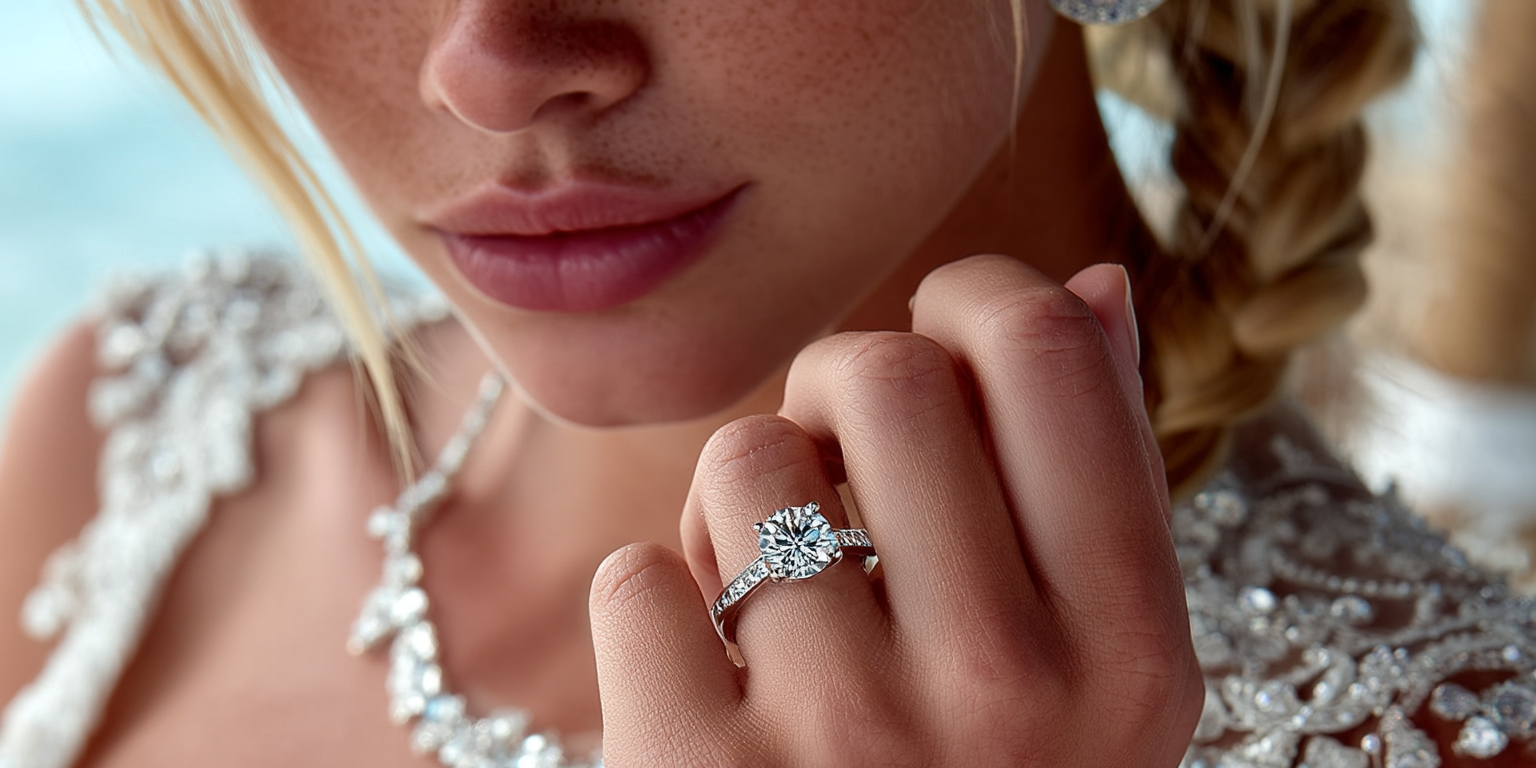
Platinum vs Palladium - The Royals of the precious metal world
In the world of precious metals, Platinum and Palladium shine the brightest. Often referred to as sister metals, they share many striking characteristics and historical significance. Let's explore the allure of these two rare metals —their properties and fascinating history.
A Glimpse into Their Unique Properties
Both Platinum and Palladium boast a naturally white hue with a deep, rich lustre, making them ideal choices for jewellery. Both metals, with a minimum purity of 95%, are not only stunning but also hypoallergenic. This means they can be worn comfortably by individuals with sensitive skin.
Their durability and strength further enhance their desirability; they are perfect for setting diamonds and crafting exquisite wedding rings. In fact, Platinum is renowned for being one of the strongest metals used in Jewellery. It withstands wear remarkably well, making it a lasting choice for pieces meant to be cherished for a lifetime.
 The White Effect
The White Effect
Both Platinum and Palladium, while beautiful white metals, exhibit subtle differences in colour. Platinum is naturally a brighter white metal with a brilliant sheen that enhances its luxurious appeal. In contrast, Palladium possesses a slightly smokier hue, adding a softer, more understated elegance to its appearance. This colour distinction allows jewellers to make unique design choices, enabling them to create pieces that highlight the distinctive characteristics of each metal while catering to varying aesthetic preferences. Whether you prefer the striking brilliance of Platinum or the refined warmth of Palladium, both metals offer exceptional beauty and versatility in jewellery design.
Comparing the Hardness of Platinum and Palladium: A Metal Showdown
When comparing the strength and durability of Platinum and Palladium, both metals demonstrate remarkable resilience, but there are some distinctions worth noting.
Platinum is known for its exceptional toughness, making it the strongest of the precious metals used in jewellery. It is highly resistant to scratching and wear, ensuring that Platinum pieces retain their pristine appearance over time. This durability is particularly important for items that are worn daily, such as wedding bands.
Palladium, while also strong and durable, offers a slight edge in weight—being lighter than Platinum—which can be a benefit for those who prefer a less substantial feel. However, it remains highly resistant to tarnishing, ensuring it stays beautiful with minimal maintenance.
Both metals are excellent choices for long-lasting jewellery, with Platinum slightly edging out in terms of strength, while Palladium provides an alluring combination of lightness and resilience.
Purity of Platinum
Platinum 950 is composed of 95% pure platinum, combined with 5% alloy, which is often palladium or cobalt. This high purity level enhances its luxurious appeal while maintaining exceptional durability. Platinum is consistently regarded as hypoallergenic, making it safe for individuals with metal allergies.
In addition, there is Platinum 600, which consists of 60% pure platinum and 40% alloy, typically palladium or cobalt. Despite its lower purity, Platinum 600 retains its characteristic shine and white hue, while remaining hypoallergenic, making it a strong, resilient choice for various jewellery applications.
Purity of Palladium
Palladium also boasts a purity of 95% with a 5% alloy mix, making it similarly hypoallergenic and suitable for those with sensitive skin. This high degree of purity contributes to its beautiful appearance and remarkable durability. Its lightweight nature, combined with the purity level, makes Palladium an enticing option for modern jewellery pieces, offering an elegant and practical choice without compromising on quality or safety.
The Rarity Factor: Why These Metals are Precious
Platinum is the rarest of all precious metals and is often regarded as the most valuable. Its extreme rarity sets it apart and contributes to its high demand. Palladium, while slightly more abundant, is still among the rarest metals on earth. The weight and scarcity of these metals make them not just valuable for their beauty but also a sound investment.
Historical Significance: A Journey Through Time
Both Platinum and Palladium have rich histories that date back centuries. Interestingly, Palladium was first discovered in 1803 by William Hyde Wollaston, who named it after the asteroid Pallas. Shortly after, platinum also found its place in history, as it was discovered to have been used by ancient Egyptian civilisations. In fact, it adorned the caskets of priestesses, serving as a symbol of luxury and power.
Platinum became prominent in Europe in the 18th century, particularly in Spain and England, where it was valued for its rarity and beauty. During this period, it was often used by jewellers to create elaborate pieces for nobility.
The Modern Appeal: Why Choose Platinum and Palladium for Your Jewellery
Today, both metals remain favoured in jewellery, especially for significant pieces like wedding rings. Their natural white colour will not tarnish or lose its lustre over time, ensuring that your cherished items remain as beautiful as the day you acquired them.
Platinum 950 is particularly renowned for its richness and purity, making it an ideal choice for anyone seeking a durable, hypoallergenic metal. This quality, combined with their illustrious past, ensures that these metals retain their appeal among fashion-forward individuals and investors alike.
Conclusion: A Lasting Legacy
Platinum and Palladium are not just metals; they are symbols of a rich history, enduring strength, and timeless elegance. Whether you are considering them for an exquisite piece of Jewellery or looking to invest in a valuable asset, these sister metals stand the test of time. Their rarity and beauty ensure they will remain sought after for generations to come. Embrace the allure of Platinum and Palladium, and let their legacy shine through in your Jewellery collection.












